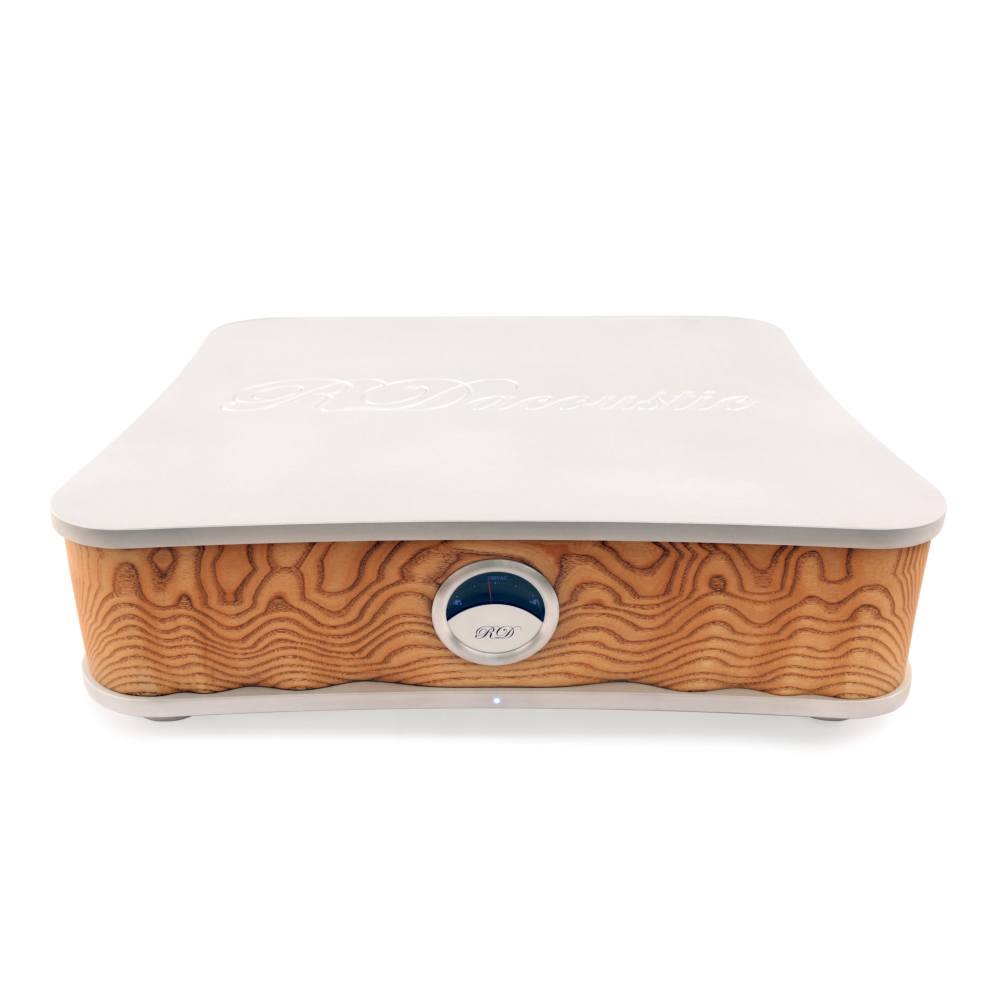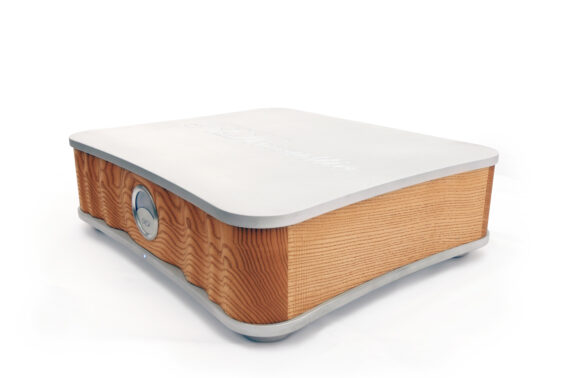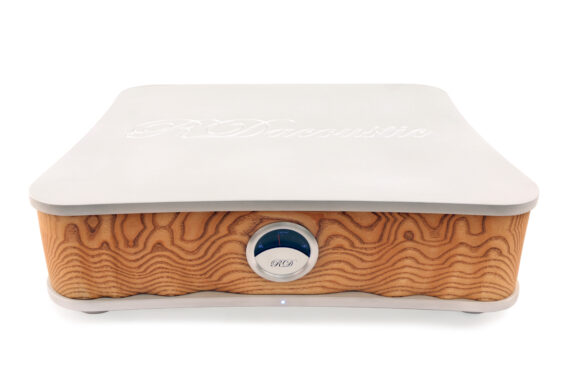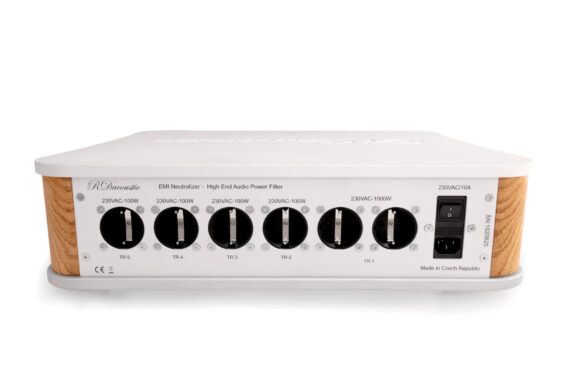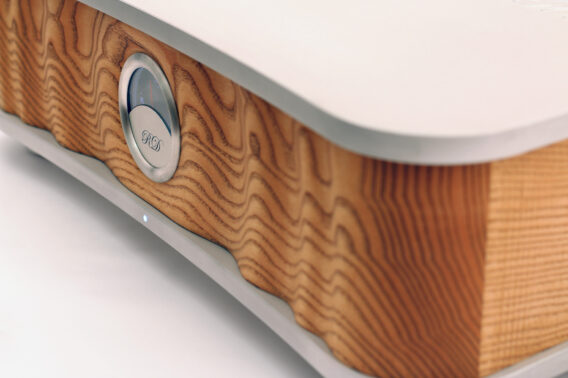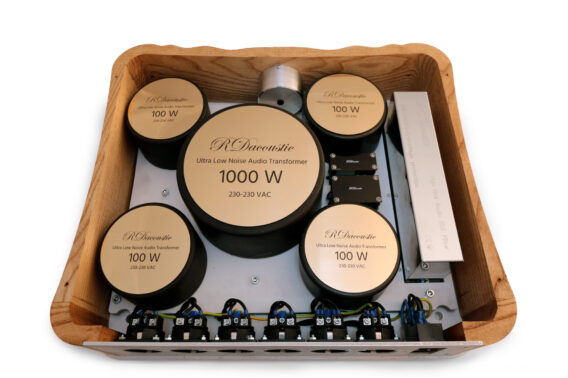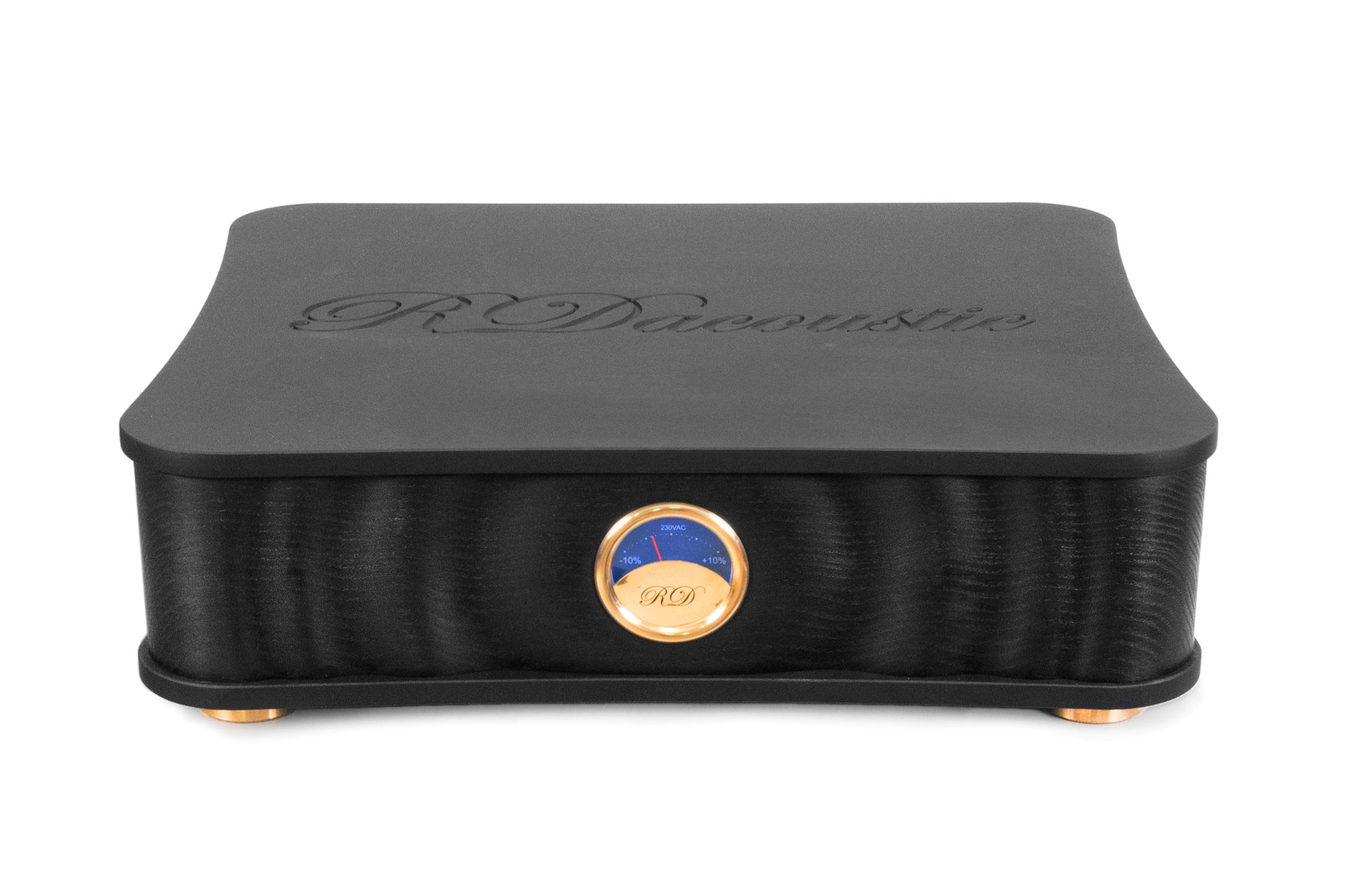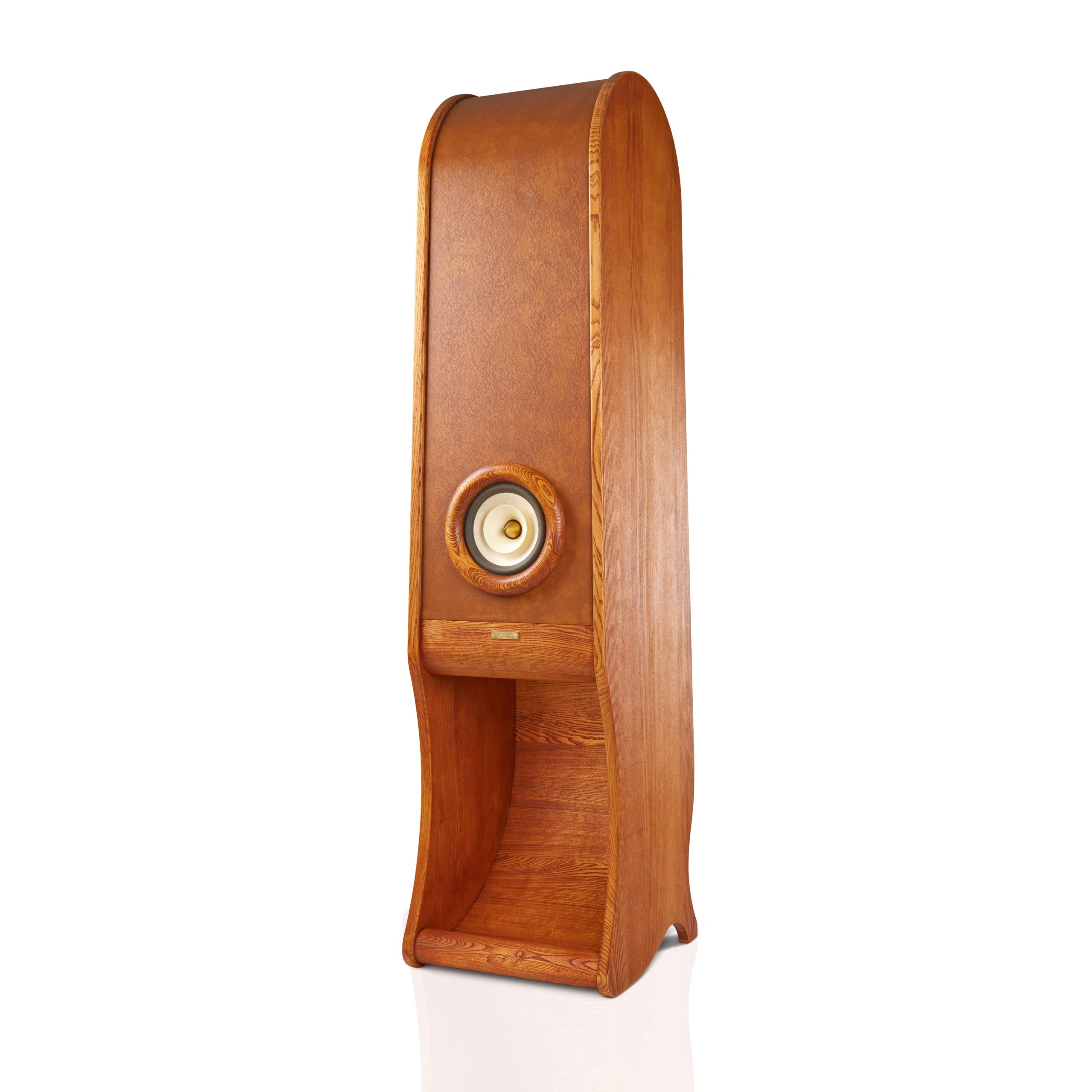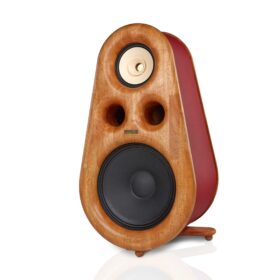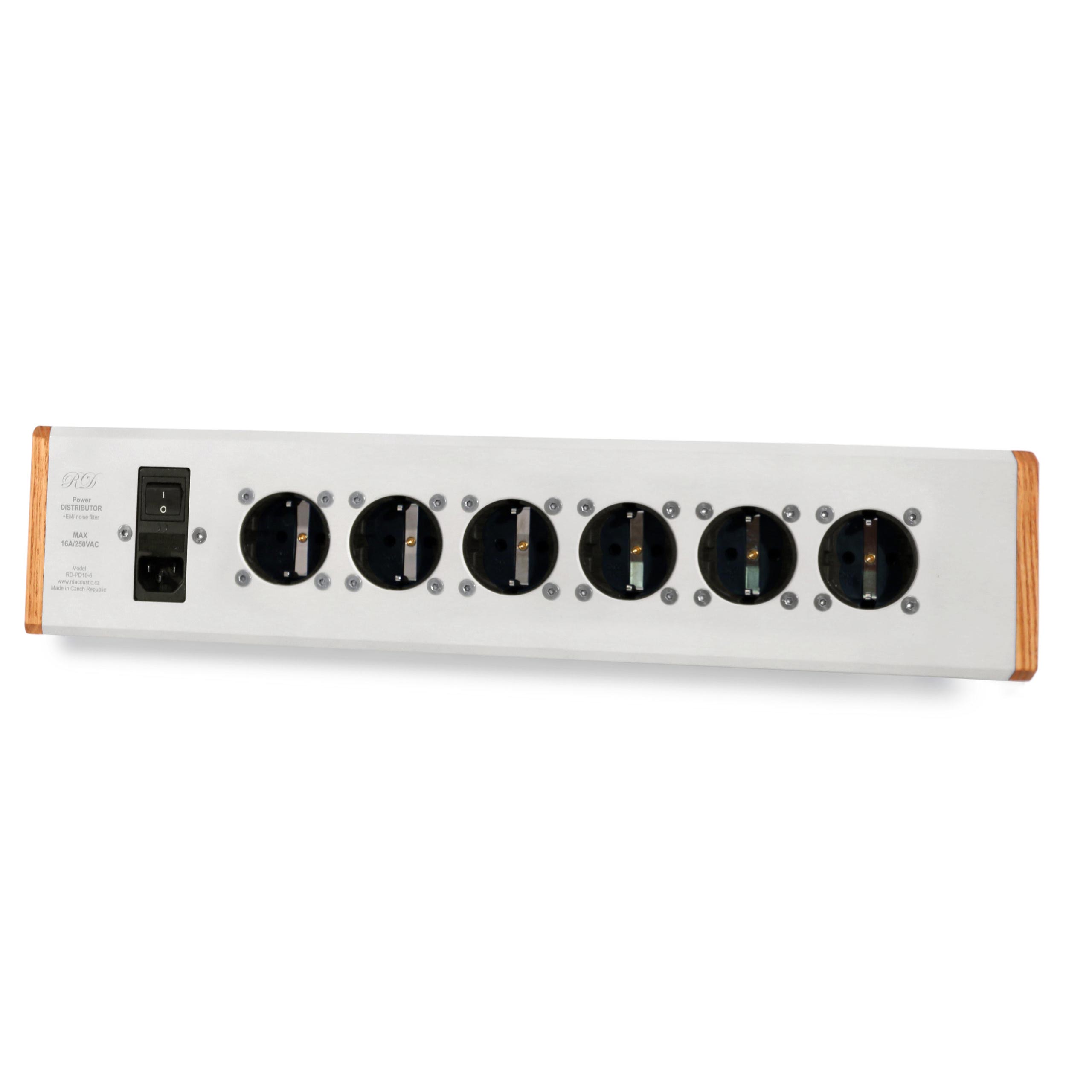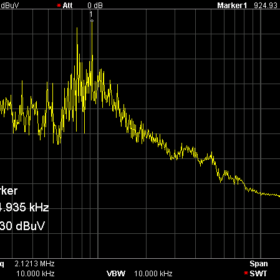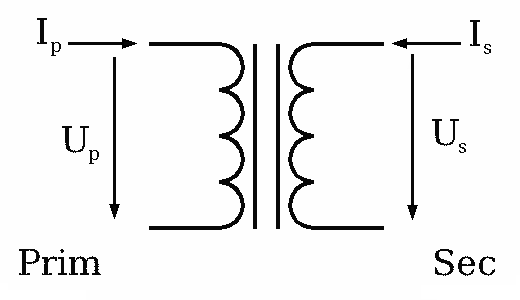RD EMI Neutralizer Power Filter
Is a complex power filter with integrated surge protection. The filter increases the distance of background noise from useful signal, making the sound more crystal-like, with more details. Filter omnipresent high frequency interference effectively and supply your sensitive audio components with clear power!
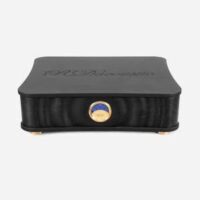
| Length | 43 cm |
| Width | 50 cm |
| Height | 15 cm |

| Length | 43 cm |
| Width | 50 cm |
| Height | 15 cm |
RD EMI Neutralizer Power Filter
The voltmeter on the front panel shows the voltage in the power grid. Six power sockets placed on the rear panel are divided into independent power circuits. Each circuit has its own isolation transformer. F4SX combined filter of our own construction is responsible for filtering of the high frequency component from the power grid and for surge protection.
Parameters
| Filtration: | Symmetrical and unsymmetrical interference |
| Filtration: | DC direct current component in the grid |
| Input and output voltage: | 230 V/50 Hz +-10 % |
| Maximum continually transmitted power: | 1400 W |
| Short-term transmitted power: | 2300 W |
| Power without load: | 8 W |
| HF filtration: | 9 kHz to 4 GHz |
| Effective HF filtration: | -35 dB to -110 dB |
| Fuse: | 10 A/T |
| Thermal protection against continual overload of the transformers: | 100° |
| Soft start circuit: | Yes |
| - Active even in off state | |
| Short-circuit current | |
| Lightning arresters 8/20 µS: | 3x 20000 A |
| Discharge type SURGE: | 3x 8000 A |
| Discharge type BURST: | 3x 6000 A |
| Overvoltage | |
| Lightning arresters activation: | 350 V |
| Discharge type SURGE: | 4500 V |
| Discharge type BURST: | 4500 V |
| 1000 W: | 1 x |
| 100 W: | 4 x |
| Isolation between circuits: | 20000 V |
| Isolation from the power grid: | 10000 V |
| Dimensions: | 495 x 425 x 145 mm |
| Weight: | 37 kg |
| Ambient temperature: | -10 to +50°C |
| Sockets type: | 6x European Schuko |
| Accuracy of the voltmeter: | +-0.5 % |
| Protection rating: | IP20 |
Combining Passion and Technical Perfection
The concept of the functional parts of EMI Neutralizer lies in the combination of the most rigorous safety requirements, overvoltage protection and first and foremost suppression of the omnipresent interference from the power grid. We based the construction on our own 20-year experience in the field of EMC (electromagnetic compatibility). We know what kind of interference occurs in the power grid and in what way it degrades the pleasure of listening to music. We know what we want—to hear details. Technically speaking, this means suppressing the power grid interference as much as possible in order to increase the distance of noise from useful signal. We reached this goal by dividing the filter into five separate circuits using T-ULN transformers complemented by an efficient F4SX input filter. The functionality of the final construction has exceeded our expectations. Results of measurements, videos, reviews and reactions of our customers will be continuously updated.
The filter is assembled and all of its parts are made in the Czech Republic and it is tested by EU SURGE and BURST overvoltage standards tests at a laboratory of the Military Technical Institute in Vyškov, Czech Republic.
Specifications
|
Our own unique audio filter with integrated three-stage overvoltage protection. The total of four filtration stages operate in the range of 9 kHz to 4 GHz with the efficiency of -23 dB to -100 dB. The filtration stages are designed for a very wide frequency range. The filter is most effective in the operating range of switched-mode power supplies which are widely used today. F4SX is designed to filter both symmetrical and unsymmetrical power supply interference. Another important filtration element is an integrated HF ferrite core inductor on the PE potential. The PE ground of the sockets is therefore also separated from the PE of the power grid. The three overvoltage protection sections are as follows: The first section consists of three lightning arresters that absorb high pulse energy (lightning strikes). The second section includes three metal-oxide varistors that absorb fast pulse overvoltage. The third section is formed by three fast varistors which eliminate any remaining high frequency overvoltage. |
|
Each audio component deserves only the best—its own power circuit. This thought is the basis of the EMI Neutralizer topology, which offers five independent circuits for each audio component. The components therefore cannot influence each other through the power source. Each power circuit is galvanically isolated from the power grid using a low noise T-ULN transformer, the construction of which also reduces HF interference between the components and from the power grid. One 1000W circuit provides power for an amplifier (two sockets are available) or monoblocks. Four 100W circuits are meant for signal sources (CD, DAC, record player, computer and others) (100 W is entirely sufficient for signal sources which usually have less than 30W continuous power input). |
|
The T-ULN transformers, again of our own construction, are designed specifically for audio. They remove harmonic components and DC direct current component from the power supply voltage. Their primary and secondary windings are separated by a special isolation layer in order to minimise unwanted capacities between them. Very low capacity between the windings eliminates the transfer of HF interference from the power supply. The transformer windings are shielded, vacuum impregnated and sealed to prevent power hum of the windings (50/100 Hz). Each of the transformers is protected against permanent overload using a resettable thermal fuse which disconnects the overloaded circuit if the temperature of the transformer winding exceeds 100°C. |
|
In the frequency range of 10 kHz to 30 MHz and 10 kHz to 4 GHZ: 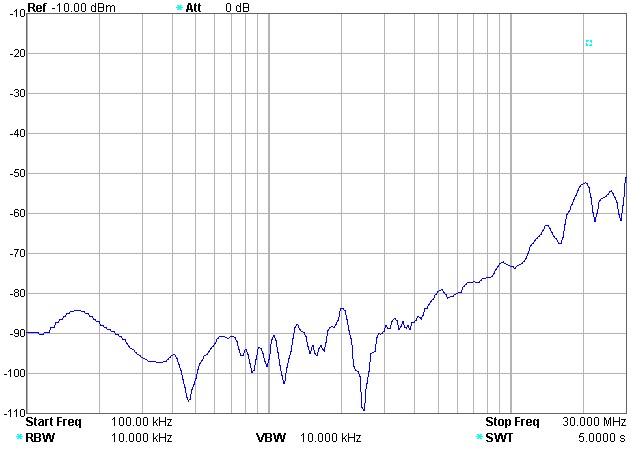 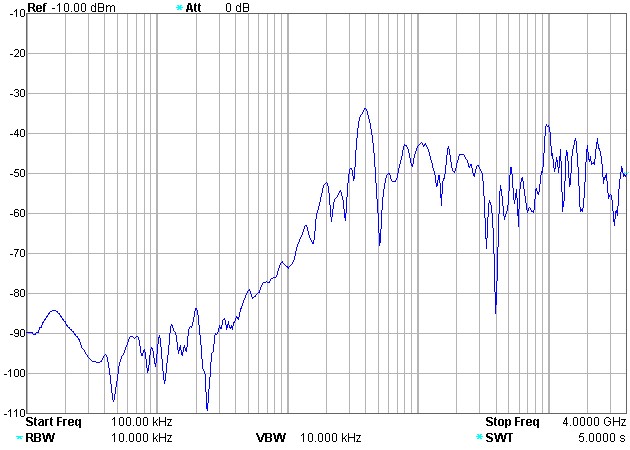 |
Accessories
Our high end speakers Evolution were created with the intent of redefining what “faithful stereo sound” means. Their sound is characterized by full details, precise instrument localization and spatiality. They contain only one high sensitivity driver, complemented by a unique horn cabinet.
Inspired by the past, formed by the present.
An original solution. A baffle optimised without any construction compromises and a range of empirical tests both contributed to the creation of these high end audiophile stereo speakers which deliver very detailed sound with a powerful bass component. They take advantage of the ideal properties of a full-range driver. The detailed elocution is complemented by excellent spatiality and instrument localisation.
Taste the littlest of details.
Is a power distributor designed to power audio components. Its single-stage EMI filter adequately reduces the today prominent symmetrical interference coming from the power grid. Precise and detail-oriented workmanship, just as the design that combines aluminium and wood, place this distributor amongst the rest of the pieces in our portfolio.
A robust solution not only for audio systems.
Reviews and videos
I had the honor of being one of the first to get my hands on the first production run of the EVO-3 anti-resonance pads. Even though I own several pads from different manufacturers, the design, quality of workmanship and most importantly the final effect is incredible for the price!
FAQ
Why filter the power supply?
Electromagnetic interference is all around us. Be it in a large metropolis or a small village, we intercept mobile signals of multiple providers, we tune in radio or television. Electromagnetic waves are transmitted by air and by the power grid. Transmitters operate in large frequency range from 1.5 MHz to hundreds of GHz. While over the grid, lower frequencies are better transmitted, we can still find high frequencies even here.
Today, almost all electrical devices use switched-mode power supplies. These and many more parts pollute the electrical distribution network. You share the power grid with your neighbours. Interference due to switched power supplies (take into account heat pumps, solar and wind power station converters, chargers, TVs, computers, Wi-Fi and other appliances like hairdryers or microwaves) is transmitted through the power grid to your sensitive audio components. All appliances should comply with the limits of interference they can emit, as defined in the EN-61000-6-3 standard. However, interference adds up from all the devices connected to the grid.
Sensitivity of the Human Ear
Although the human ear cannot beat that of a bat, dog or a cat, it is nevertheless very sensitive. We hear the range of 20 to 20000 Hz, with the sensitivity of about 0 dB (threshold of hearing) to 130 dB (threshold of pain). dB is a logarithmic unit. The finest audible detail has an acoustic intensity of 10−12, or one billionth, of W/m2 (watt per square meter), in comparison to a loud 120 dB disco, which has the acoustic intensity of 1 W/m2. Billion is the range we are able to hear. If we put a million coins onto a pile and had a million of these piles and put them all onto one pile, if we then added or took away just one coin, it would be the equivalent of the difference that the human ear can distinguish. Even a small increase in interference, amplified by an amplifier together with the useful signal, will be recognisable.
Why should we care about high frequencies?
Human hearing is limited to 20 kHz, we cannot hear higher. At young age, we hear higher frequencies, as we become older, the audible frequency decreases. We cannot hear 1 MHz, for example, but we can and do hear low frequencies modulated on the high ones. Radio uses this principle, which is called amplitude modulation: We hear low frequencies modulated on high frequencies transmitted through air—AM broadcasting. Just like through air, high frequencies are transmitted by power lines.
Background Noise
Hum, buzz, noise is omnipresent. In electrical engineering, it designates a signal corresponding to acoustic noise or visual noise (large grain in digital photos or videos). EMI Neutralizer significantly reduces electromagnetic interference, or noise, coming from the grid. The tiniest details in music, otherwise hidden in the noise area, can then come forward.
Isn’t the wiring at a house supposed to stop any possible overvoltage?
Lightning strike accounts for most of damage and destruction of electronic devices. The transients in question are too fast for a breaker or a tube fuse to take action. A burning thread in the tube fuse forms plasma which is conductive, and the pulse current in the order of thousands of amperes gets to the device. A standard defines overvoltage protection (EN 61643-11:2012). If the wiring at a house is done in accordance with it, you should be protected against most types of overvoltage. The norm says that there have to be three stages of overvoltage protection. There should be at least 10 m of cable between each of them. That is because with the jump in current (the upsurge in voltage is up to 1000 V/μs), serial resistance and induction is needed so that the energy of the strike is distributed in such a way that each step of the protection functions with the kind of discharge it is constructed for. Were all the three stages put into one distribution board, for example, they wouldn’t work. Our filter has all the three stages separated by inductors, so they function in one component.
Harmonic Components: Distinction
Explaining the technical side of our filter to our customers, when adding that it filters the harmonic components from the grid we often hear “But I don’t want to filter harmonics.” A distinction needs to be made here: harmonic components in music (a part of useful signal) do not equal unwanted harmonic components of the current in the power grid. We obviously do not filter the former.
Harmonic component means a multiple of a base frequency. With music, it is a part of the useful signal. (See our blog post where we describe the phenomenon.) In the power grid, we talk of harmonic components that occur dues to switching (again frequency multiples of the base frequency, with 16kHz switching frequency converters, this can be up to hundreds of MHz) and of deformation of current against voltage (from 50 Hz up to 9 kHz), which is caused by rectifiers. The total distortion is described by the THD parameter.
What is the difference between RD Power Filter and RD EMI Neutralizer?
RD Power Filter provides complex surge protection and includes a single-stage filter. Its maximal transmitted power is 500 W and it is meant to power a single component. RD EMI Neutralizer provides three more filtration stages (four in total) including separate galvanic isolation for every audio component.
From our blog
Would you like to know what interference occurs in the power grid? Why deal with filtration? To illustrate the issue, I made measurements at four different places. For comparison, I used a common EURO cable and RD Power Filter.
Are external power filters useful in any way? Why are high quality EMI (electromagnetic interference) filters not a part of most consumer electronics devices? Should we care about high frequency interference, considering we cannot hear it or see it?
Newsletter
We'll let you know about our participation in audio shows, new reviews and products, new places to listen to your speakers, or new posts on our blog. We won't spam you.
